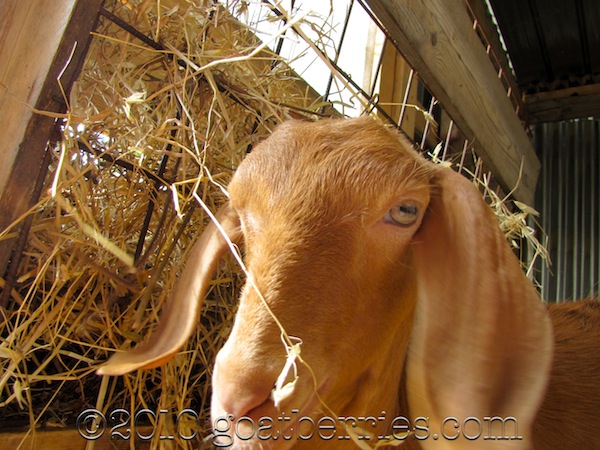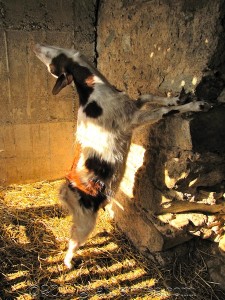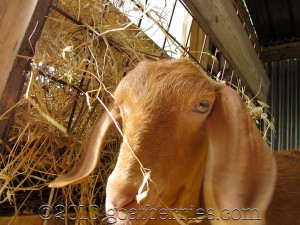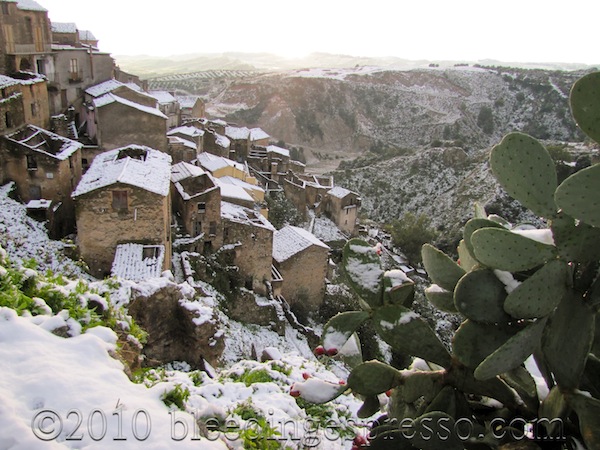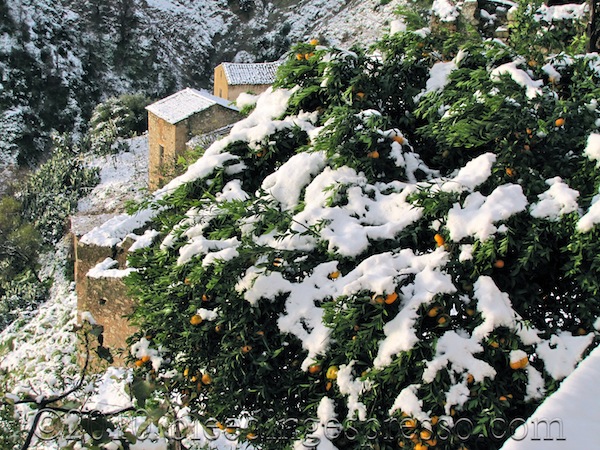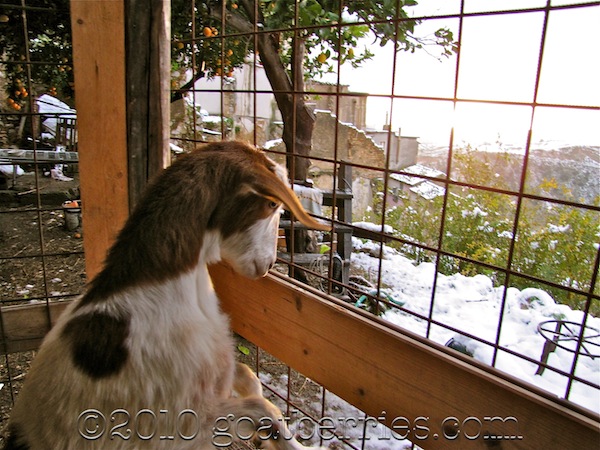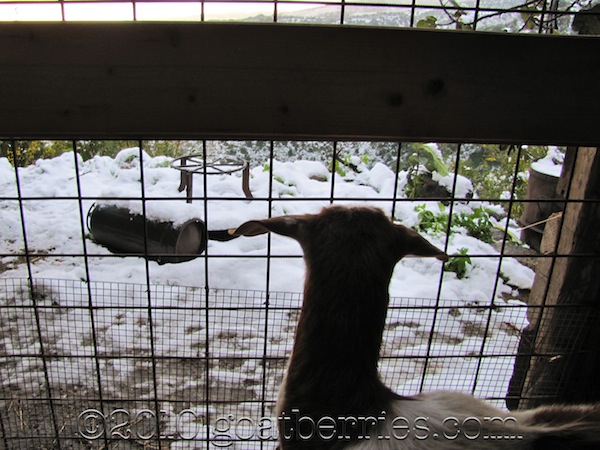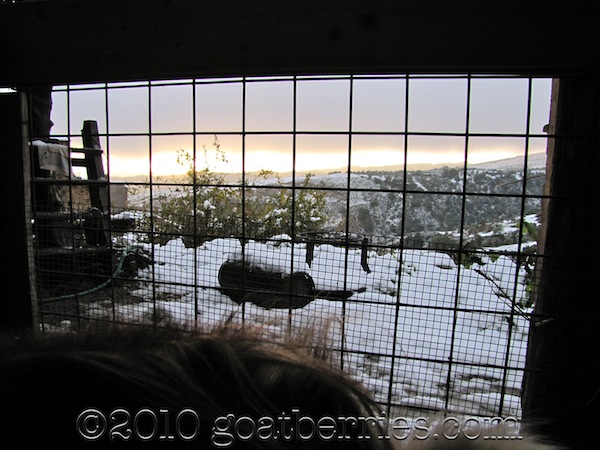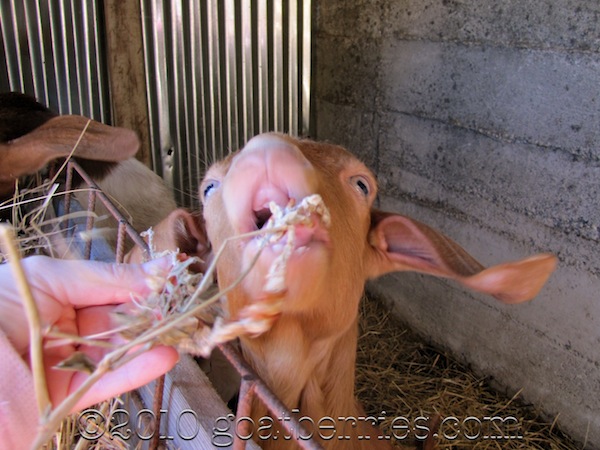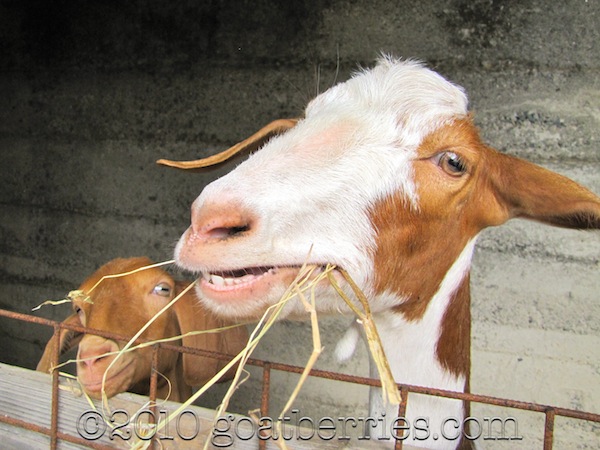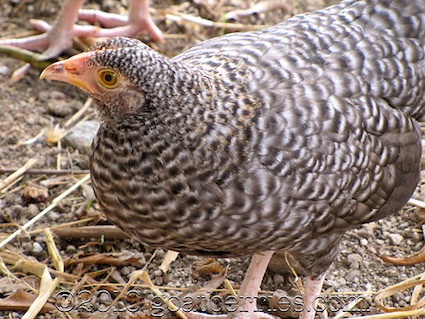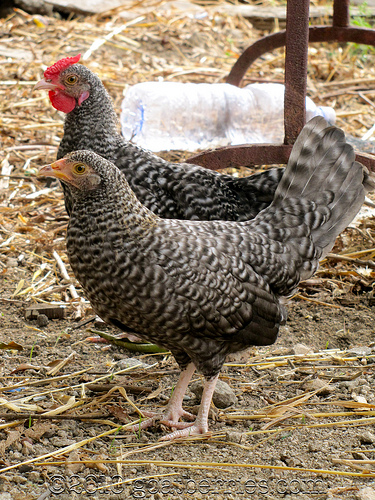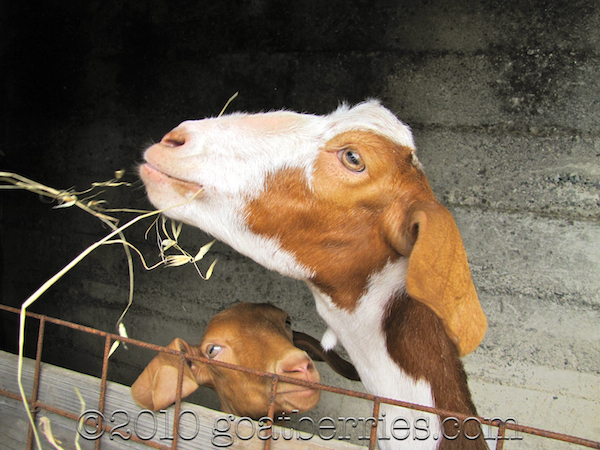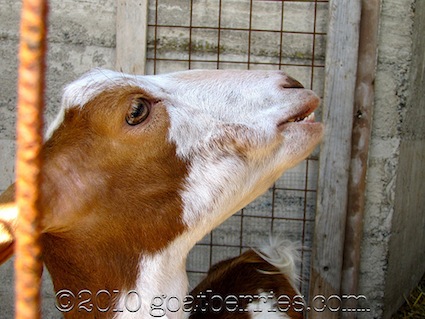Archive for the ‘Photos’ Category
Why Is My Goat Crying and Restless?
I got a question from a reader recently asking what might be wrong with a goat that is crying and restless. Great timing, in fact, because I myself have a goat who is crying and restless — Signorina Pasqualina.
We’ll get back to her in the next post (stay tuned!), but first, and I can’t stress this enough, it is extremely important that you know your goat when trying to diagnose what the problem might be. That is, you need to know your goat’s normal behavior in order to tell if something is off — and not all goats act the same in normal circumstances, so it can be difficult to generalize. My overriding rule is that if you feel something is off, it probably is, so pay attention. But what are you looking for?
What Kind of Crying Is It?
First of all, ask yourself: what kind of cry is it? If you know your goat, you know what s/he sounds like most of the time — and you’ll definitely know the difference between normal “Hey maaaa I’m here!” bleating and any kind of pain or distress. Quick example: when Pasqualina was just a wee kid, she got herself tangled in a cord and believe-you-me, even from a pretty good distance, I knew that bleat was not just for fun and games; she was terrified (although not injured, thank goodness).
One important question to ask at this stage is whether your goat has a buddy. It doesn’t have to be another goat necessarily, but goats are social animals, and they like company. So your goat may just be crying because it’s lonely and wants some attention. But if your goat has company and suddenly starts crying for no reason, read on.
Reasons Why a Goat Might Be Crying
Once you’re pretty sure there’s something else behind the cry other than just trying to get your attention, you should look for other symptoms or behaviors that aren’t normal for your goat so you can narrow down what might be wrong with him or her. Goat bloat is where my mind always turns when I think of goat health problems, so let’s go there first.
Symptoms of Goat Bloat
Other than crying in pain, the telltale symptom of goat bloat is a larger than usual (and larger than the other side), distended left side of the goat, where the rumen is located. Goats with bloat may also show other signs of being uncomfortable like teeth grinding, kicking at their sides, and just seeming generally depressed. You should put your ear up close to the rumen and check for gurgling sounds — there should be some if the rumen is working correctly. If the bloat is more severe, a goat may also have trouble breathing.
I’ll be writing more about goat bloat and other goat illnesses in the future for handy reference, but for now, know that if you think you goat has bloat, you should first check and make sure there are no obstructions in the mouth or throat; generally you can just run your hands down the throat and feel for anything out of place. You can then start massaging his or her sides to kind of loosen up the gas that’s in there, focusing on the upper left, kind of like you’re burping a baby — your goat will hopefully start making some burps, etc. and release some gas. If some air has escaped, you can then offer some baking soda to further help balance that pH in there.
For lots more detailed information on goat bloat, visit Fias Co Farm.
There are many other illnesses a goat could have, though, so be sure to check any and all symptoms before just deciding your goat is wanting attention. Here is a handy list of potential goat illnesses along with their symptoms at from GoatWorld.
One thing we haven’t touched on, though, as a reason your doe might be crying is that she’s in heat — which is exactly what we’re going to talk about next time using our Pasqualina as a case study.
Keeping Goats Warm in the Winter
As some of you may know from my Facebook updates, we are currently experiencing a bit of SNOW here in southern Italy.
Although snow is par-for-the-winter-course in the deep mountains of Calabria (we have several ski resorts), it’s not nearly as common here in my village, which is about 250 meters above sea level and a 10-minute winding drive away from the Ionian Sea.
I’m in my eighth winter here, and this is maybe the third time I remember even a dusting in the village itself, so this is quite an exciting time for this girl who comes from the mountains of Pennsylvania.
But what about the goats? This is the first time they’ve ever seen snow.
In fact, it normally doesn’t drop below freezing very often here, so I was a little worried about keeping them warm. Paolo assured me that they’ll be fine in their winter coats and *excellent* shelter he built, which is completely covered and protected from wind and moisture, but what can I say? As you know, I’m a worrywart goat maaaa….
So I read up a bit and found out that it’s good to give them some warm water (or hot if you’re mixing with cold) so they’ll have a little treat — kind of like us coming inside for hot cocoa — and also plenty of great hay to keep their rumens working and their body heat flowing.
Indeed when I checked on them this morning, they looked just fine, but I gave them some good rubdown kind of petties just to increase that blood flow all the more. You can never be too careful with the goaties.
Which is why I’m about to head back over there with more warm water, fresh hay, and, of course, petties.
OK, and maybe an old blanket or two….
P.S. See more of my snowy pics over at Flickr.
Raising Goats from the Teeth Up
People who aren’t familiar with goats are sometimes afraid they’re going to bite them, which is a rather baseless fear not only because goats are generally some of the least aggressive animals around (headbutting aside) but also because they have no top front teeth.
See those gorgeous gums? That’s all they have up there — just a dental pad.
They do have bottom teeth in the front, however.
When a goat is full grown, he or she will have eight incisors (biting or cutting teeth), all permanent teeth. Just like humans, though, they start out with baby teeth, so to speak. A kid has all small, sharp teeth for about a year. When the kid is about a year old, the center two teeth go bye-bye and are replaced by two permanent teeth. Then about every year or so after that, two teeth moving away from the center teeth on either side are replaced with permanent teeth until the goat has all eight permanent incisors by about four or five years old.
At that point, the teeth start to space apart, and you can begin to tell the age of the goat by the wear and tear on the teeth as opposed to the number of permanent versus baby teeth.
So does all this mean you can’t really be harmed by a goat’s teeth? Not exactly.
They *do* have 24 molars for chewing their cud in the back of their mouths — six on each side, upper and lower. And they are sharp as all get out, so you don’t want to be sticking your fingers toward the back of a goat’s mouth.
In other words, although it’s quite cute to see and feel the lil’ baby goats gnawing on the tip of your finger between their incisors and dental pad, once they start shifting that head to get your finger to the back of their mouth, you *must* get out of there, lest you become the cud.
Just trust me on that one, mkay?
A Detour to the Chicken Coop: The Phantom Maran
If you like Goat Berries on Facebook, you already know I have a hen who doesn’t like to enter the coop at night. One extremely tense, scary time, I got unsolicited help from Giordano Kitty who chased her around the garden (gah!) until she went in, but since then, she no longer chooses the low branches of the fig tree for a hiding spot. She ain’t dumb.
So we’ve been playing, ahem, chicken now for a while ever since we let them out of their cage, which had been in the chicken coop for several weeks, supposedly acclimating them to the space. In fact, the first two or three nights “free,” she did go into the coop at night with everyone else, no problem. Not anymore.
In the beginning, I couldn’t find her at all when I went looking in the evening, but then in the morning, she was always there waiting for me, looking around with a “Hey, why is everyone still sleeping?!” look on her face.
But then I had a talk with her beau:
And let him know the potential seriousness of the situation. We do have foxes around here and also plenty of stray cats. So soon thereafter, when I went to close them in for the night, even though he was already inside, he came back out and started calling to her . . . and looking up.
And there she was in the mandarin tree. Really, really high! So after coaxing her down with the help of a bamboo stick to shake the branches, I got her in the coop. This has now been the routine for about a week, unless I show up before she’s in the tree, in which case I actually don’t have much trouble getting her in.
All I can figure is that she doesn’t really like hanging out with the big hen or perhaps the other rooster, who are both big personalities, but this hen in the tree routine is getting old. She doesn’t even remotely respond to feed or my calling or even, as it turned out, her little boyfriend calling her. Just the stick.
Any suggestions?
Have You Hugged a Goat Today?
Forgive me for making you click, but I posted some new goat photos over at my main blog, Bleeding Espresso, yesterday, and I thought you might enjoy them. My girlies really hammed it up in the pen yesterday morning . . . here’s a taste:
Can you see the heart shape on Pasqualina’s face? Thanks Dana!
Buon weekend!
My Goats Are Walking All Over Me
Literally.
Normally I wear a cheap pair of fake Crocs to the goat pen, but yesterday I forgot to change my shoes and went over in just my flip flops. This is a mistake I’ll never make again because OMGOMGOMG OOOOOWWWWWWIEEEE does it hurt when a goat steps on your bare foot! And then dances ever so slightly on it just to make sure your fourth toe on your left foot is actually cut open instead of just throbbing in pain.
Sure, Pasqualina will say she didn’t dance, but I think the guilt is written all over her smirking face.

